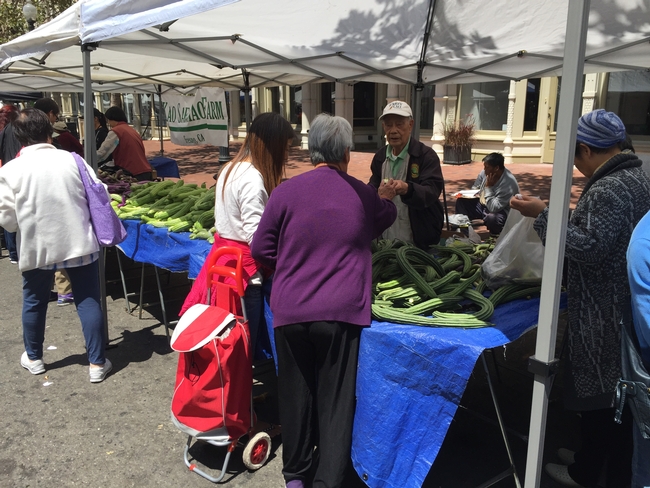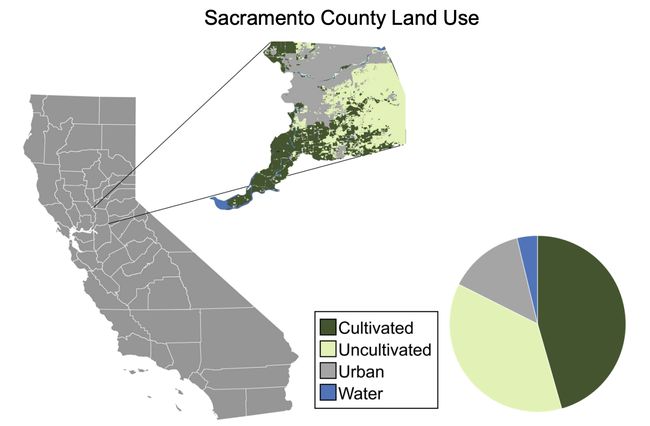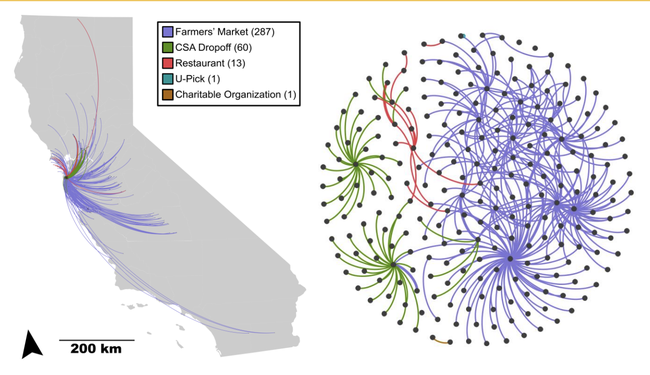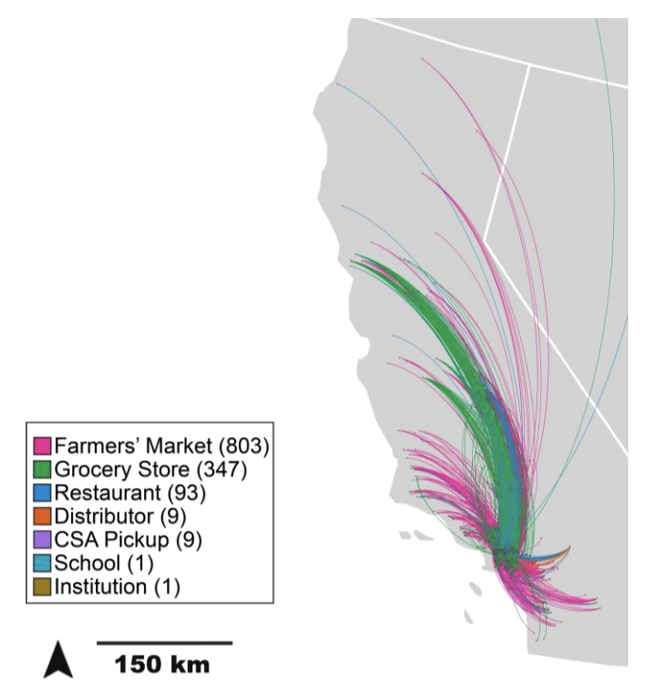Over the past year, many farmers have had to navigate rapid shifts in marketing practices since the COVID-19 pandemic disrupted traditional food-supply systems. During this time, establishing relationships with local vendors has become necessary for growers to maintain and increase profits.
To create a more connected and sustainable environment for local farms and markets, it has become crucial to understand the network of growers and identify critical gaps and central hubs in regional food systems, according to University of California Center for Regional Change Director Catherine Brinkley.
To help farmers establish connections with restaurants and produce sellers, Brinkley has created online resources for markets and farmers to identify opportunities to build relationships with local vendors in Los Angeles, San Francisco, Santa Clara and Yolo counties – and, most recently, in Sacramento, Placer and El Dorado counties.
Creating direct relationships with vendors is key in areas such as Sacramento County, home to California's capitol, one of the nation's highest producing agricultural counties, and rising rates of food insecurity.
“To draw attention to the transparent marketing connections between farms and markets in the county, we gathered online information about farms that advertise where their products can be found and the markets that advertise which farms they support,” said Brinkley.
With support from the Sacramento Region Community Foundation, Valley Vision, a regional nonprofit, is coordinating efforts to update the Sacramento Regional Food System Action Plan, which covers El Dorado, Placer, Yolo and Sacramento counties. Brinkley's guides are assisting in this effort to understand how the regional food system is changing and connecting with growers and consumers.
Similarly, Brinkley's team has helped Santa Clara County's efforts to create a food plan by supplying a community food guide and farmland mapping.
Often, farmers connect directly with community members at farmers markets, through community supported agriculture (CSAs), and form relationships with buyers at local restaurants and institutions committed to supporting the community's combined needs for a healthy diet, soils and development. By building a community food system, Brinkley hopes farming practices and consumer needs will become more transparent and adjust to help better meet the needs of ecosystems, farmers, farm workers and consumers.
Establishing a more integrated and complex community food system could benefit the community beyond growers and markets, generating regional pride and mutual support. By proudly showcasing the farms and markets that sell or donate food to them, farmers markets, grocery stores and restaurants could build trust in the food system – and boost name recognition for many of the contributors.
“It is our hope that this research will encourage farmers, vendors and those within the community to create connections and utilize their purchasing power in ways that will support their local agricultural community,” said Brinkley. “Building coalitions of growers and sellers can help promote sustainable farming practices within the area, which support farm workers, the environment and fellow consumers.”
Brinkley's team also highlights avenues for building greater equity into the food system with a focus on self-identified growers and market managers of color as well as where farms and markets donate to food banks and seek to alleviate food insecurity.
The online publications developed for Sacramento, El Dorado, Yolo and Placer counties includes mapping of transparent market connections, a food system assessment to help understand how the many farms and markets are connected, which markets are essential to the network, and which types of marketing practices are dominant within these counties.
The guides are produced in partnership with UC Agriculture and Natural Resources, Community Alliance with Family Farmers, the Edible Schoolyard Project, Valley Vision and the California Alliance of Farmers Markets.
Brinkley intends to produce guides for all 58 California counties. “Community Food Guides” for El Dorado, Placer, Los Angeles, Sacramento, San Francisco, Santa Clara and Yolo counties can be downloaded for free at https://brinkley.faculty.ucdavis.edu/home/research/california-county-community-food-guides



